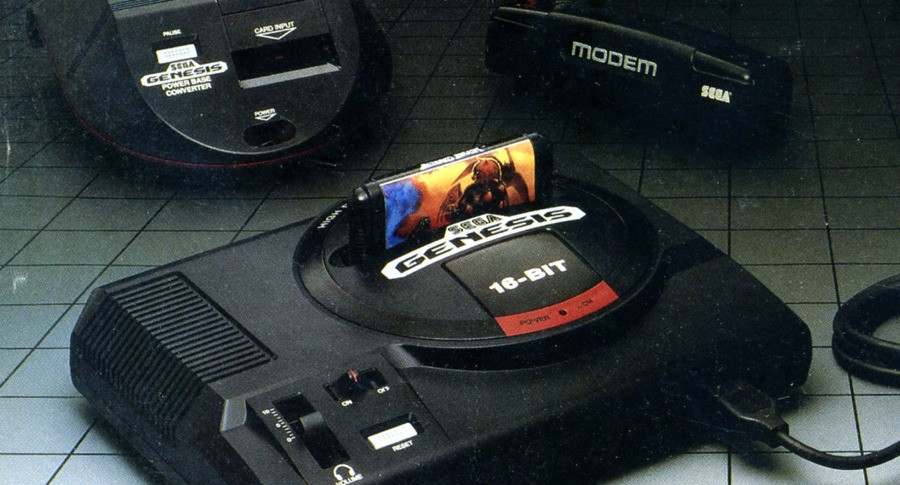
If you look at some of the early US marketing for the Sega Genesis, you'll likely see a peculiar peripheral lurking among its various accessories and add-ons. The device, called the TeleGenesis, was a planned North American counterpart to the Japanese Mega Modem that was released exclusively in Japan in 1990.
The Japanese device allowed users to connect to various online services, via a phone line, including personal banking and live play-by-play accounts of baseball matches. That's in addition to communicating and playing games online with other users over a shared network. The American equivalent the TeleGenesis was scheduled to release shortly after the Japanese version and was even demoed at the Summer Consumer Electronics Show in 1989, as well as the Winter Consumer Electronics Show in 1990 with TeleGenesis Baseball (an American version of Sunsoft's Tel-Tel Stadium). However, it never reached North American stores, despite being advertised quite prominently at the time, and receiving some favorable press.
Recently, Al Nilsen — Sega's Head of Marketing during the Genesis era — was able to shed some light on what happened to the device in an interview with Time Extension and explain why the company got cold feet over introducing it to the US. Nilsen would know, as he was the person who initially came up with the "TeleGenesis" name and was directly involved in marketing Sega's product line in America.
As Nilsen explains:
"I guess we might have actually shown it as the first CES in the June of ’89 when we launched the Genesis system in the US and it was a less-than-ideal experience; it was slow going back and forth. Also, we looked at the two or three other games they had in development, but I can’t remember what they were. And the price was relatively high. I don’t remember what it was: $100 or something like that. And we made the decision not to go and bring it into the US because we thought it would be not a big seller and it just wasn’t an ideal game-playing experience compared to what the experience was with Sega Genesis: playing all of the arcade games and action games and sports games (some of them Baseball). So that’s where it went."
In hindsight, this decision might have been for the best. As covered in an excellent Gaming Historian video on the device, Sega of America instead directed its attention towards publishing good software, focusing on western-centric titles and endorsements from star athletes like Joe Montana, alongside developing memorable ad campaigns like "Genesis Does What Nintendon't".
Sega of Japan, meanwhile, struggled to justify the Mega Modem, with users complaining about connectivity issues, slow download speeds, and high associated costs. The death knell came with the release of the Mega Drive 2 in 1993, which removed the console's nine-pin expansion port, making the Mega Modem obsolete once-and-for-all.
This wouldn't be the end of Sega's attempts to add online connectivity to its consoles. Just one year later in 1994, for example, it launched a cable service called the Sega Channel, which we've previously covered in-depth on the website.
